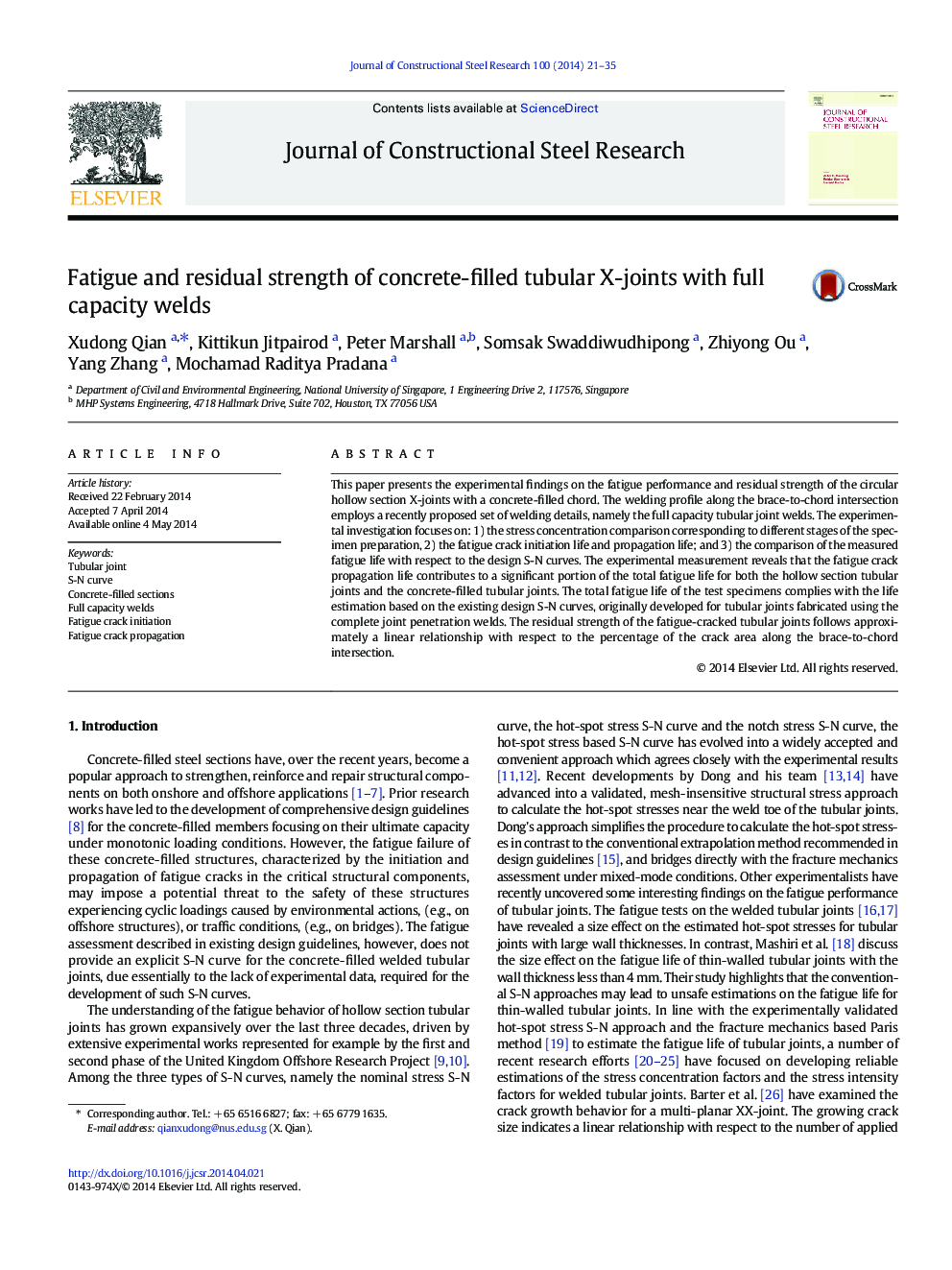| Article ID | Journal | Published Year | Pages | File Type |
|---|---|---|---|---|
| 284681 | Journal of Constructional Steel Research | 2014 | 15 Pages |
•The concrete-filled chord reduces the stress concentration factors.•The shrinkage gap influences significantly the SCF values.•Residual strength of cracked joints follows a linear relationship with crack area.
This paper presents the experimental findings on the fatigue performance and residual strength of the circular hollow section X-joints with a concrete-filled chord. The welding profile along the brace-to-chord intersection employs a recently proposed set of welding details, namely the full capacity tubular joint welds. The experimental investigation focuses on: 1) the stress concentration comparison corresponding to different stages of the specimen preparation, 2) the fatigue crack initiation life and propagation life; and 3) the comparison of the measured fatigue life with respect to the design S-N curves. The experimental measurement reveals that the fatigue crack propagation life contributes to a significant portion of the total fatigue life for both the hollow section tubular joints and the concrete-filled tubular joints. The total fatigue life of the test specimens complies with the life estimation based on the existing design S-N curves, originally developed for tubular joints fabricated using the complete joint penetration welds. The residual strength of the fatigue-cracked tubular joints follows approximately a linear relationship with respect to the percentage of the crack area along the brace-to-chord intersection.
